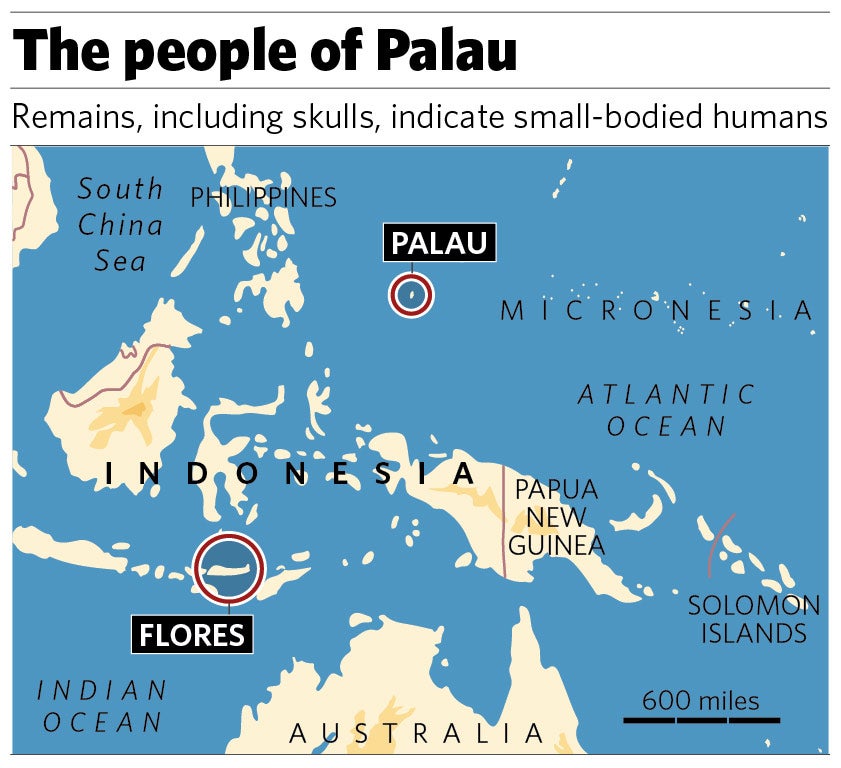Skull may identify tiny islanders who shrank to survive

The bones of "small-bodied people" who lived on a remote island in the Pacific Ocean have been discovered by scientists who believe they may represent an unusual branch of the human family that grew progressively smaller.
A team of palaeontologists discovered the remains – including a diminutive skull – in rock caves on the Micronesian island of Palau, about 370 miles from the Philippines to the west and Papua New Guinea to the south.
One theory is that the exceptionally short humans – who grew no taller than three or four feet – had undergone an evolutionary adaptation known as "island dwarfism" in response to living on a remote island where there were no predators but little to eat.
Scientists said bones belonging to 26 individuals have been excavated from two caves nine miles apart and that radio-carbon dating has suggested they lived on the island between 1,000 and 3,000 years ago.
However, the scientists believe the bones could belong to the descendants of the first colonisers of the islands, who could have arrived 4,000 years ago. These colonisers may have been smaller than average individuals who as a result of inbreeding and other evolutionary factors produced an even smaller population.
Lee Berger, of the University of Witwatersrand in Johannesburg, who led the research team, said the bones, which included pelvis, teeth and a nearly complete skull, suggests they were from a rare group.
"They weren't very typical, very small in fact ... I felt right away this was a minute human being," said Dr Berger, whose study is published in the online journal Public Library of Science.
The scientists say in their report that it was difficult to assess the brain size of the people because the only complete skull was heavily encased in flowstone, a rock-like substance that forms inside the caves.
"Nevertheless, it is clear that the brain size is small, possibly at the very low end or below that typically observed in modern small-bodied humans," it said.
Preliminary work suggests the brains will almost certainly fall below the size of 147 modern human specimens used for comparison.
The find is reminiscent of the discovery in 2004 of a group of humans, nicknamed "the hobbit", in Indonesia. Their most unusual feature was a small head with a grapefruit-sized brain, which was in perfect proportion to a tiny body about three feet tall.
Many scientists who studied these bones believe they are so unusual that they should be classed as a distinct human species called Homo floresiensis, or "hobbit". Others suggested that the skull belongs to someone suffering from microcephaly, a congenital disorder where the braincase does not grow normally.
Dr Berger believes the diminutive people of Palau belonged to anatomically-modern humans – Homo sapiens – even though they had undergone a degree of evolutionary change.
"We feel that the most parsimonious, and most reasonable, interpretation... is that they derive from a small-bodied population of Homo sapiens," the researchers said.
Other experts are sceptical of the dwarf theory and say modern Polynesian islanders show no such trends towards becoming smaller. They say the bones may belong to children buried together – a practice seen on nearby islands.
Lost tribe of Palau will be shown on National Geographic channel on 30 March
The study 'Small-Bodied Humans from Palau, Micronesia', is available to read online by clicking here .
Join our commenting forum
Join thought-provoking conversations, follow other Independent readers and see their replies
Comments